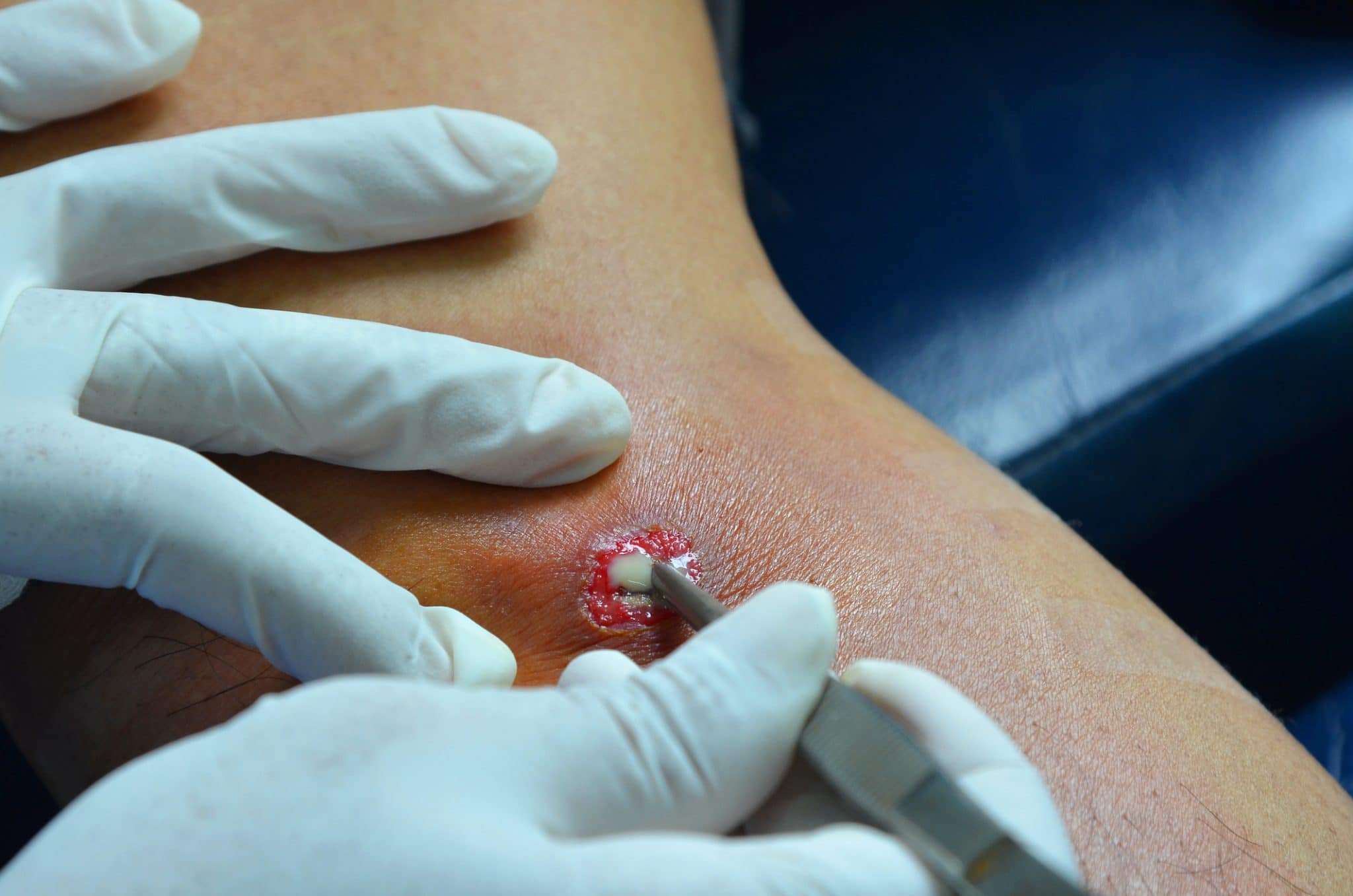What is abscess drainage?
An abscess is a pocket of pus that forms around an infection. Pus is a fluid made up of germs (bacteria), white blood cells, and other matter. Abscess drainage is a way of draining pus from an infected area or organ inside the body. This helps the infection heal. The procedure is done by a specially trained doctor called an interventional radiologist.

In abscess drainage, an interventional radiologist uses imaging guidance (CT or ultrasound) to place a catheter (a long, thin, hollow plastic tube) into the abscess to remove or drain the infected fluid from an area of the body such as the chest, abdomen or pelvis. It may take several days for all the fluid to be removed.
Before The Abscess Drainage Procedure
You should not consume any food or liquids for 6 hours prior to the procedure. However, you may take all regular medications as scheduled with small sips of water.
It is important for you to report any medications you are taking to the radiology nurse, including “blood thinners”, such as aspirin, Plavix, Lovenox, Coumadin, Pradaxa, Xarelto, or Eliquis. Your physician may advise you to stop taking a “blood thinner” for a specific period of time before your procedure.
Your should also report any allergies to the radiology nurse, especially those to iodine contrast (x-ray dye) or local anesthetic medications.
Prior to your procedure, your blood will be tested to determine if your blood clots normally.
Women should always inform the x-ray technologist if there is any possibility that they are pregnant. Many imaging tests are not performed during pregnancy so as not to expose the fetus to radiation. It is required that you arrange for a relative or friend to drive you home after the procedure.
Patient Testimonial
"Our Family is truly thankful for the quality care Summit healthcare provides us with. I highly recommend Dr Chad Brimhall and Dr Daryl Brimhall in snowflake. Summit has really been there for our family. THANK YOU!"
Abscess Drainage Procedure
For the procedure, a nurse will insert an intravenous (IV) line into a vein in your hand or arm so that medication can be given intravenously to help you relax. You will be positioned on the CT or ultrasound table and images will be taken to find the best location for drainage.
Your skin will be cleaned with an antiseptic solution and the area is covered with a large sterile sheet. You will feel a slight pinprick when the local anesthetic (numbing medicine) is injected in the area.

Using CT or ultrasound as a guide, the radiologist puts a catheter (a long, thin, hollow plastic tube) through the skin and into the abscess to allow for drainage of the infected fluid. Pus drains from the abscess through the catheter. A bag or a suction bulb will be attached to the catheter to hold the pus as it drains.
Potential Risks and Complications
- Bleeding at the procedure site
- Infection at the procedure site
- Spread of infection
- Problems due to iodine contrast, including allergic reaction or kidney damage
- Injury to an adjacent organ, nerve, blood vessel, or muscle
What To Expect After Abscess Drainage
After the procedure, the catheter and drainage bag will likely remain in place for several days. Avoid pulling on the catheter.
Try to get plenty of rest for the remainder of the day after your drainage. You may return to light activity the day after the procedure.
If sedation medications were given, please review the following:
- You have been given a medicine that causes temporary drowsiness, clumsiness, and poor judgment. For the remainder of the day, do not drive, operate machinery or make important decisions; and avoid dangerous activities, including bicycling, swimming, or working at heights.
- You may temporarily feel sick, weak, or dizzy. This is normal. Some people will vomit if they eat too soon. As soon as you feel like you can drink without vomiting, you should try water, juice, or soup. You can progress to solid foods if the fluids do not cause nausea and you are feeling well.
You should avoid heavy lifting or strenuous labor for 3 days after your drainage. Mild pain, discomfort, or bruising at the procedure site is expected. You may take over-the-counter Tylenol for any pain you may experience.
You will have a small bandage over the site. Leave the site dry and exposed. Monitor the drainage site daily. You may shower, but do not have a tub bath for 3 days.
To help keep the drain working properly and to prevent the drain from being clogged, the drain needs to be flushed with 10cc of Normal Saline twice a day according to the following instructions. We have supplied you with 10cc syringes of sterile normal saline and alcohol swabs.
- There is a 3-way stopcock in between the drain and the bag. The 3rd port of the stopcock is for flushing the drain. Unscrew the cap from the 3rd port on the stopcock.
- Clean the open port of the 3-way stopcock with an alcohol swab.
- Attach the 10 cc syringe of normal saline to this open port on the 3-way stopcock.
- Turn the lever on the 3-way stopcock so that the “OFF” position is towards the drainage bag.
- Push all of the 10 cc into the 3-way stopcock and then pull back on the syringe to aspirate any fluid that may come.
- Turn the “OFF” position on the lever back to the port that has the 10cc syringe on it.
- Remove the syringe and screw the cap back onto the open port on the stopcock.
- Please track the amount of drainage into the bag each day.
Reasons To Call Your Doctor
Call your doctor if you have any of the following:
- Signs of infection at the procedure site, such as redness, swelling, or a fever.
- The fluid stops draining from the tube, or the tube moves or comes out.
- Bleeding from the procedure site.
- Worsening, severe pain near the procedure site.
- Fainting or feeling lightheaded.
